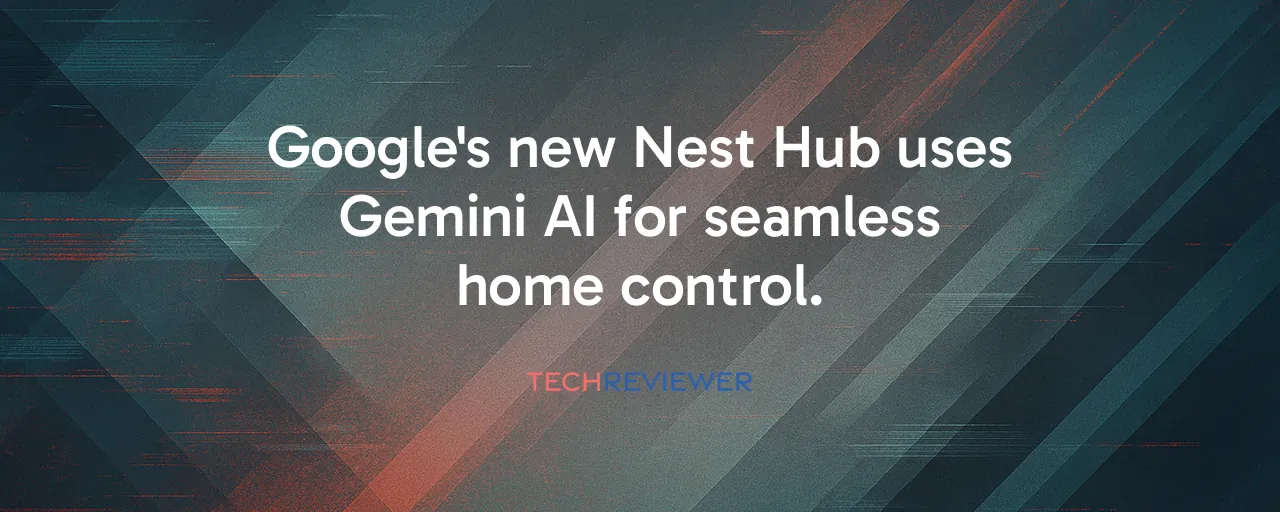A Smarter Hub for Busy Homes
Google's smart display ambitions are back in the spotlight. After a four-year gap since the last Nest Hub launched in 2021, the company is doubling down with a new model powered by its Gemini AI. Anish Kattukaran, Google Home's chief, shared the news on The Vergecast, signaling a renewed focus on blending voice, touch, and visuals for seamless home control. This move comes as Amazon's Echo Show lineup, with its frequent updates and roughly 60% market share, has dominated the smart display space. Google's challenge? Prove its AI-driven vision can win over households craving intuitive, reliable devices.
What sets this Nest Hub apart is Gemini's ability to process text, images, audio, and touch inputs all at once. Think of a morning where your hub flashes your calendar, reads the weather aloud, and adjusts your thermostat before you finish your coffee. It's a leap from the clunky voice-only assistants of the past, aiming to make smart homes feel less like a tech experiment and more like an extension of daily life.
Everyday Life, Elevated
The new Nest Hub promises to simplify routines with its multimodal AI. In the kitchen, it can display recipes hands-free, set timers, and stream music while you chop vegetables. For families, it offers shared calendars and video calls to keep everyone connected, whether it's a quick check-in with grandparents or a household-wide announcement. Accessibility stands out, too: voice outputs help those with vision impairments, while touch controls assist users with hearing challenges, making the device inclusive for diverse needs.
Google's recent Home app redesign, launched in October 2025, boosts this experience with 70% faster loading and 80% fewer crashes on some Android devices. Features like Help Me Create let users set up complex automations just by describing them, like asking the hub to dim lights and lock doors at bedtime. These practical touches show Google's focus on making smart displays indispensable, not just shiny gadgets.
Google vs. Amazon: A Tale of Two Strategies
Amazon's Echo Show has set the pace for smart displays since 2017, with its September 2025 lineup introducing revamped Echo Show 8 and 11 models boasting better processors and audio. Frequent updates and a range of sizes, from 5 to 21 inches, have cemented Amazon's lead, capturing a majority of the market. Google, by contrast, stumbled with a four-year Nest Hub hiatus and the November 2024 cancellation of the Pixel Tablet's second generation due to profitability woes, despite its promising hybrid design.
The lesson? Consistency matters. Amazon's iterative approach built user loyalty, while Google's gap left room for doubt. Still, Google's Gemini integration, rolled out across even decade-old devices in October 2025, shows a commitment to long-term support. By pairing advanced AI with hardware, Google aims to carve out a niche where Amazon's broader ecosystem hasn't fully capitalized on multimodal intelligence. The catch is whether Google can deliver a device compelling enough to sway Echo Show fans.
Navigating Privacy and Market Hurdles
Smart displays, with their always-on microphones and cameras, spark valid concerns. About 25% of consumers hesitate to buy them due to privacy fears, and 49% of connected device owners report security issues. Google's Gemini relies on some cloud processing for complex tasks, raising questions about data transmission. Privacy advocates call for clearer data policies, especially as devices like the Nest Hub Max integrate cameras for video calls and security monitoring.
Beyond privacy, Google faces a crowded market where smartphones and tablets already handle many smart display tasks. The Matter protocol, backed by Google and Amazon, promises better device interoperability, but adoption lags, frustrating users stuck in ecosystem silos. To succeed, Google must rebuild trust with clear privacy commitments and a device that feels essential, not optional, in a market projected to hit $30 billion by 2035.
